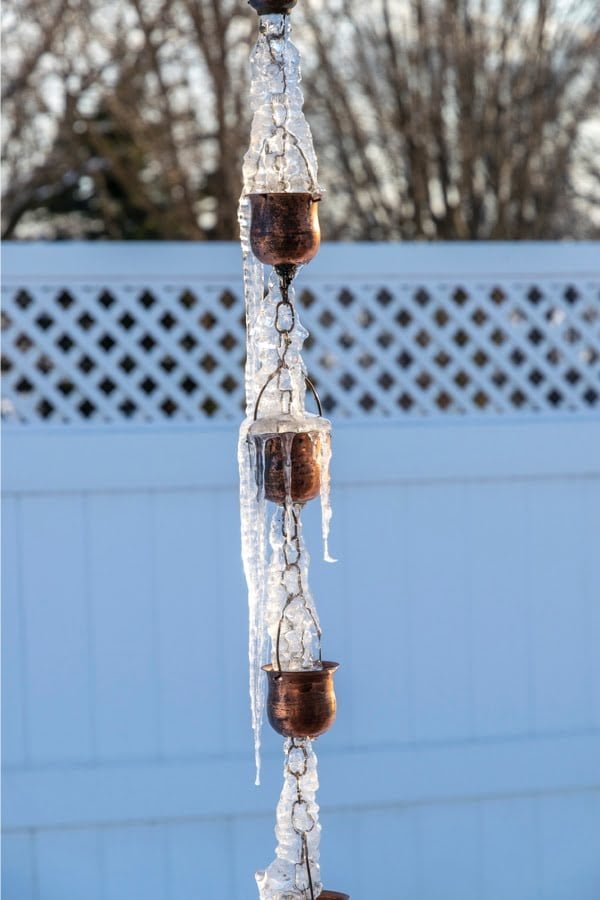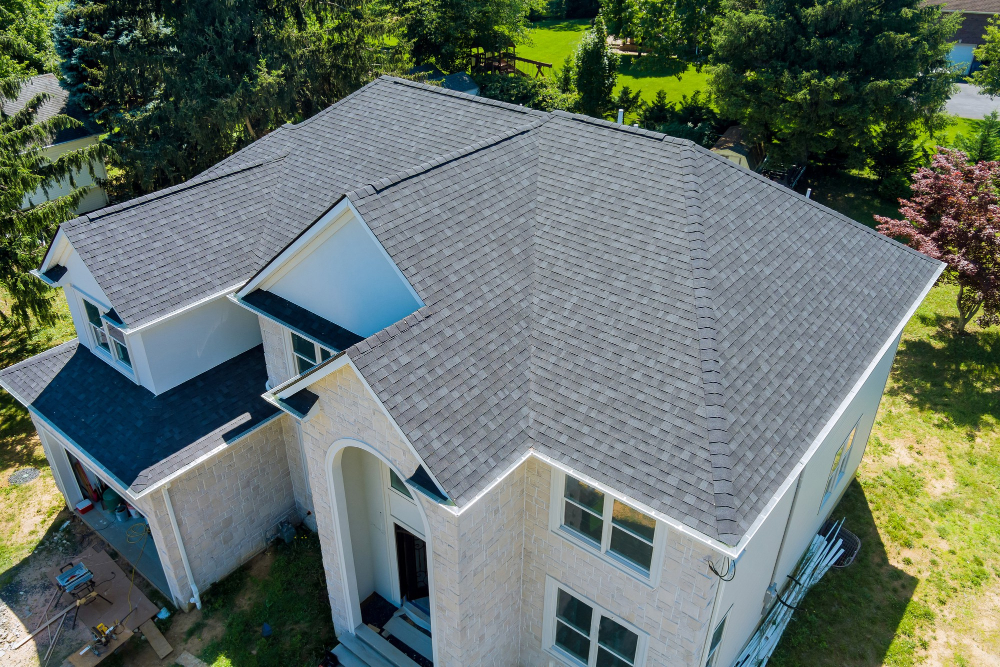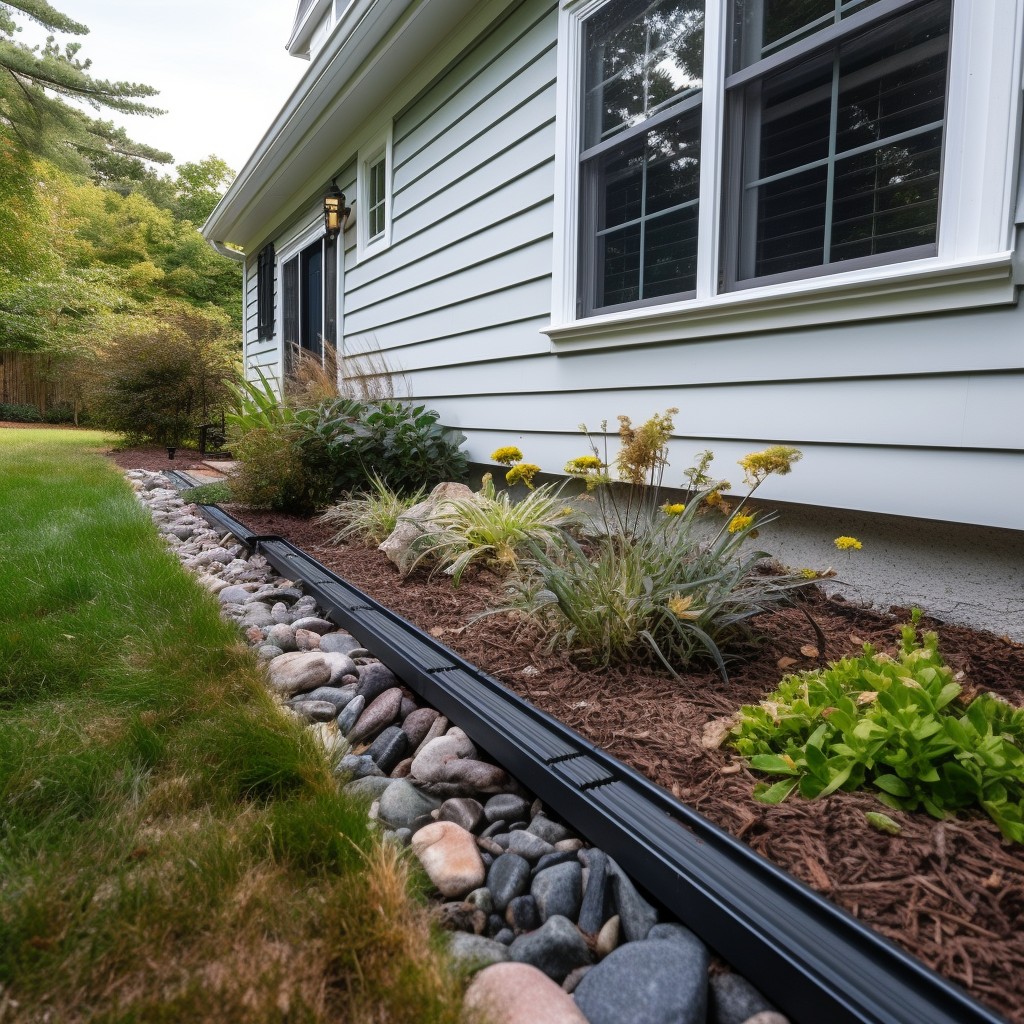Last updated on
Explore the world of gutter alternatives for metal roofs and learn how to effectively manage rainwater without compromising on style or function.
Metal roofs are a popular choice for homeowners due to their durability and longevity. However, when it comes to gutters, traditional options may not be the best fit for this type of roofing.
Fortunately, there are alternative gutter solutions that can not only complement the aesthetic of your metal roof but also provide effective water management. In this article, we’ll explore some unique gutter alternatives for metal roofs that won’t break the bank.
So whether you’re looking to replace your old gutters or simply want to upgrade your home’s exterior, read on for some budget-friendly ideas that will make a big impact!
Types of Metal Roof Gutters
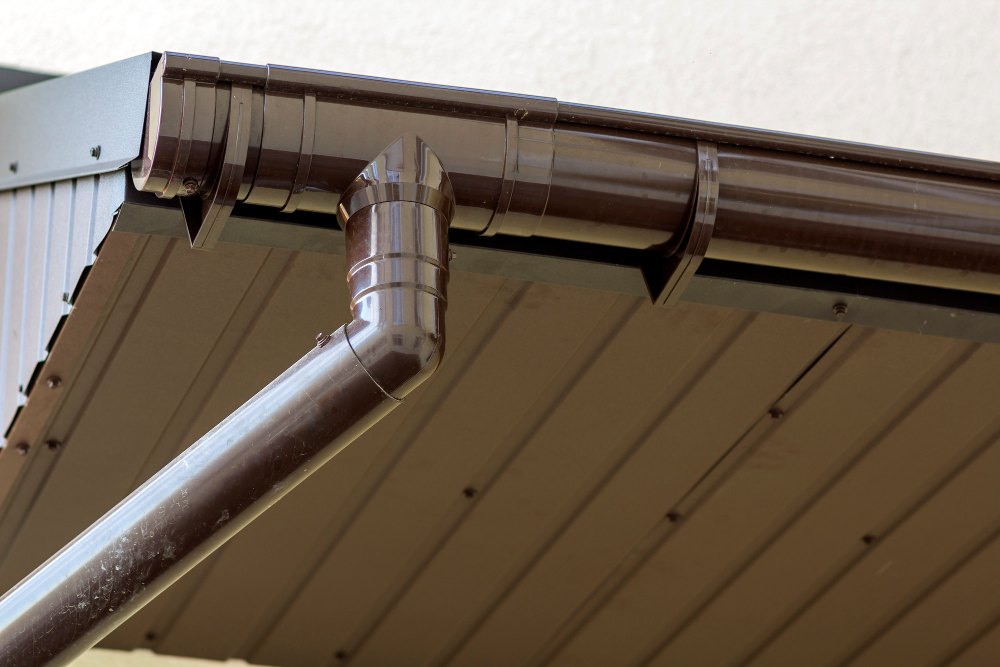
When it comes to metal roof gutters, there are several types to choose from. One of the most common options is the K-style gutter, which has a flat bottom and back with a decorative front that resembles crown molding.
Another popular choice is half-round gutters, which have a rounded shape that complements the curves of many metal roofs.
For those who prefer seamless gutters for their metal roofs, there are also options available. These custom-made gutters are created on-site using specialized equipment and can be made in various materials such as aluminum or copper.
It’s important to consider not only the style but also material when choosing your gutter type for your metal roof. Aluminum and steel are both durable choices that can withstand harsh weather conditions while copper offers an elegant look with its natural patina over time.
Ultimately, selecting the right type of gutter for your home will depend on factors such as budget, aesthetic preferences and functionality needs.
Seamless Gutters for Metal Roofs
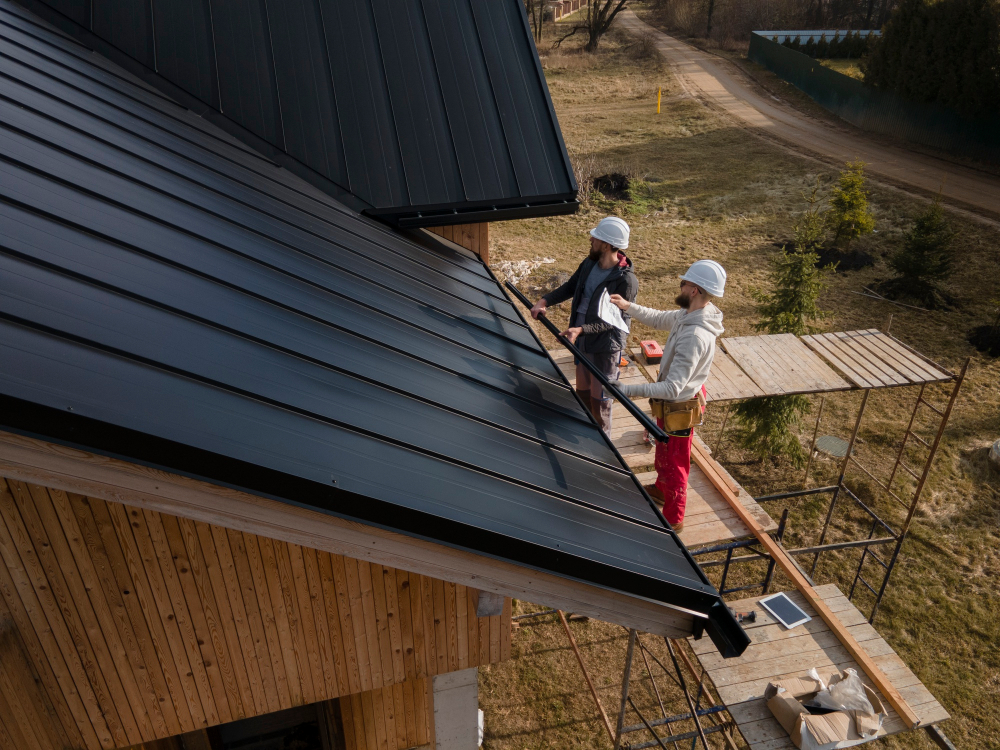
Unlike traditional sectional gutters, seamless gutters are custom-made on-site to fit the exact dimensions of your home’s roofline. This means that there are no seams or joints where leaks can occur, making them more durable and less prone to clogging.
When it comes to installing seamless gutters on a metal roof, it’s important to work with an experienced professional who has the necessary tools and expertise. The process involves using a special machine that shapes continuous lengths of gutter material into the desired profile while also ensuring proper pitch for water flow.
One advantage of choosing seamless gutters is that they come in a variety of materials such as aluminum, copper or steel which can be color-matched with your roofing material creating an aesthetically pleasing look.
While they may cost more upfront than traditional sectional gutter systems, seamless options offer long-term savings by reducing maintenance costs over time. They also provide better protection against water damage which could lead costly repairs down the line.
Integrated Gutter Systems

These gutters are built into the roofline, creating a seamless and sleek look that complements the modern aesthetic of metal roofing. Integrated gutter systems can be made from various materials such as copper, aluminum or steel and come in different shapes to fit your home’s design.
One of the benefits of integrated gutter systems is their durability. Since they’re part of the roof structure itself, there’s less chance for leaks or damage caused by high winds or heavy rainfalls.
Another advantage is that these gutters require minimal maintenance compared to traditional options since they don’t have seams where debris can accumulate over time.
However, it’s important to note that installing an integrated gutter system requires professional expertise and may not be suitable for all types of metal roofs. It also tends to be more expensive than other alternatives due to its custom fabrication process.
Custom Fabricated Gutters
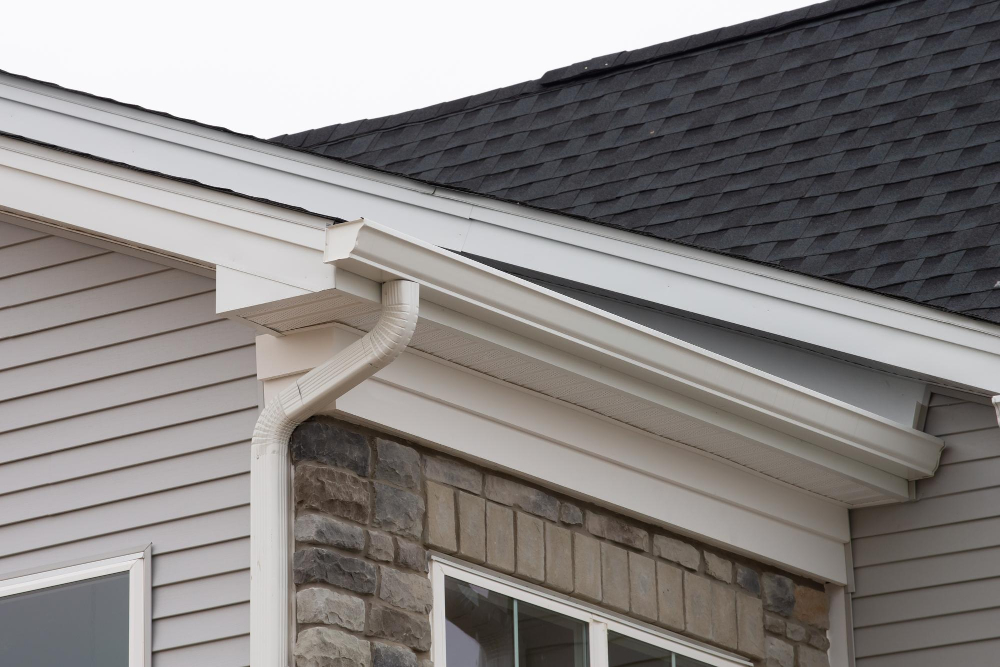
These gutters can be made from various materials, including copper and aluminum, and can be designed in different shapes and sizes to fit the specific needs of your home. Custom fabricated gutters offer several benefits over traditional gutter systems, such as better water flow management due to their larger size or more efficient drainage angles.
One of the main advantages of custom fabricated gutters is that they provide an opportunity for personalization. You can choose from a variety of colors and finishes that match your home’s exterior design perfectly.
These types of gutters are often seamless which means there will be fewer leaks or clogs compared with standard sectional gutter systems.
However, it’s important to note that custom fabricated gutters may come at an additional cost compared with other alternatives on this list due to the specialized nature involved in creating them specifically for your roofline dimensions.
Box Gutter Installation
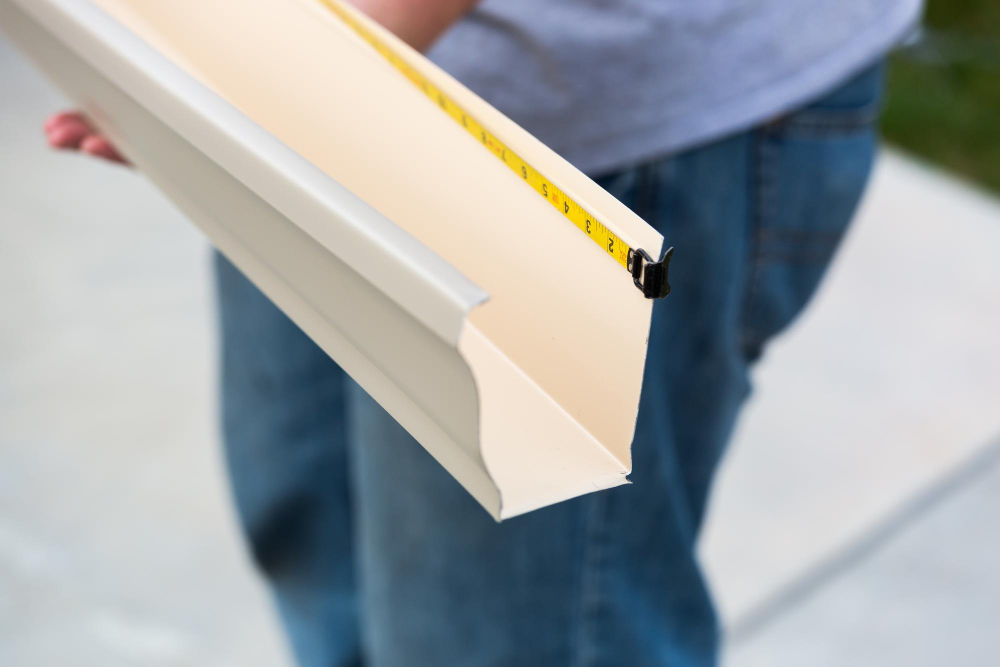
These gutters are installed within the roof’s structure, creating a seamless look that blends in seamlessly with the rest of your home’s exterior. Box gutter installation requires careful planning and precise measurements to ensure proper water flow and drainage.
To install box gutters on your metal roof, you’ll need to work closely with an experienced contractor who specializes in this type of gutter system. They will assess your roofing needs, take accurate measurements, and create custom-fabricated box gutters that fit perfectly into your roofline.
One advantage of installing box gutters is their ability to handle large volumes of rainwater without overflowing or leaking onto the ground below. This makes them ideal for homes located in areas prone to heavy rainfall or frequent storms.
However, it’s important to note that improper installation can lead to serious issues such as leaks or water damage inside your home. That’s why it’s crucial only trusted professionals should carry out any installations involving structural changes like these.
Built-In Gutters
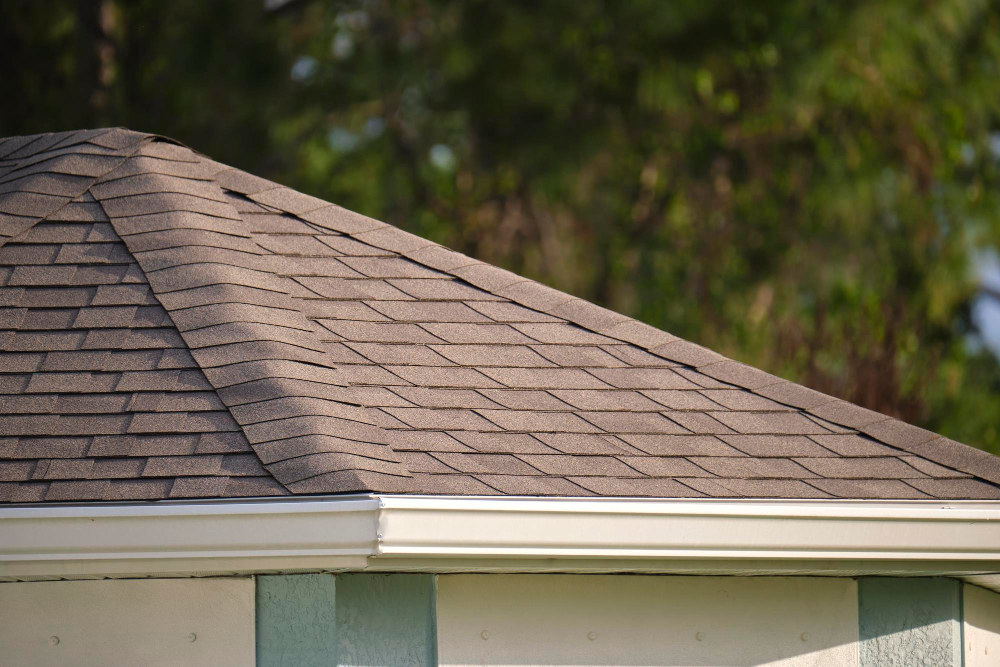
These gutters are integrated into the roofline, creating a seamless and streamlined appearance that complements the overall design of your home. Built-in gutters can be made from various materials such as copper, aluminum or steel, depending on your preference.
One advantage of built-in gutters is that they require less maintenance than traditional gutter systems since there are no seams or joints where debris can accumulate. However, it is important to keep them clean and free from leaves and other debris to prevent clogging.
Installation costs for built-in gutters may be higher than other types due to their custom nature but they offer long-term savings by eliminating repair costs associated with traditional gutter systems over time.
Rain Chain Systems
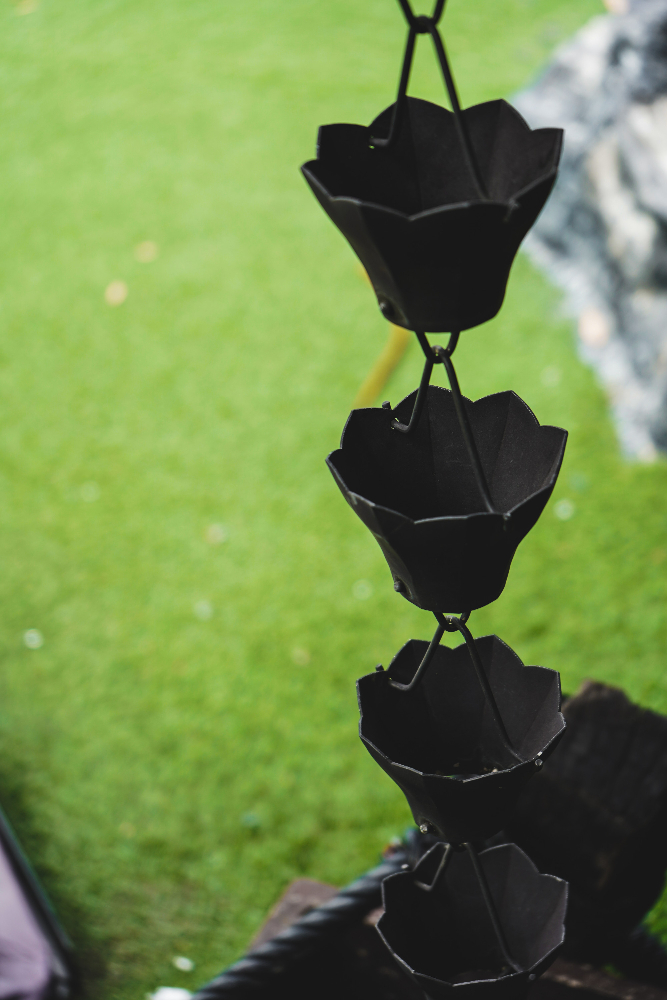
These systems consist of chains or cups that hang from the roof’s edge, guiding rainwater down into a collection basin or directly onto the ground. Rain chains come in various styles, materials, and lengths to suit different home designs and personal preferences.
One advantage of rain chain systems is their aesthetic appeal. They add an elegant touch to your home’s exterior while also providing effective water management.
They produce soothing sounds as water trickles through them during rainfall.
When it comes to installation, rain chain systems are relatively easy to set up compared with traditional gutters since they require no special tools or skills. However, it’s essential first to ensure that your roof can handle the weight of heavy rainfall without causing damage.
Rain Dispersal Systems
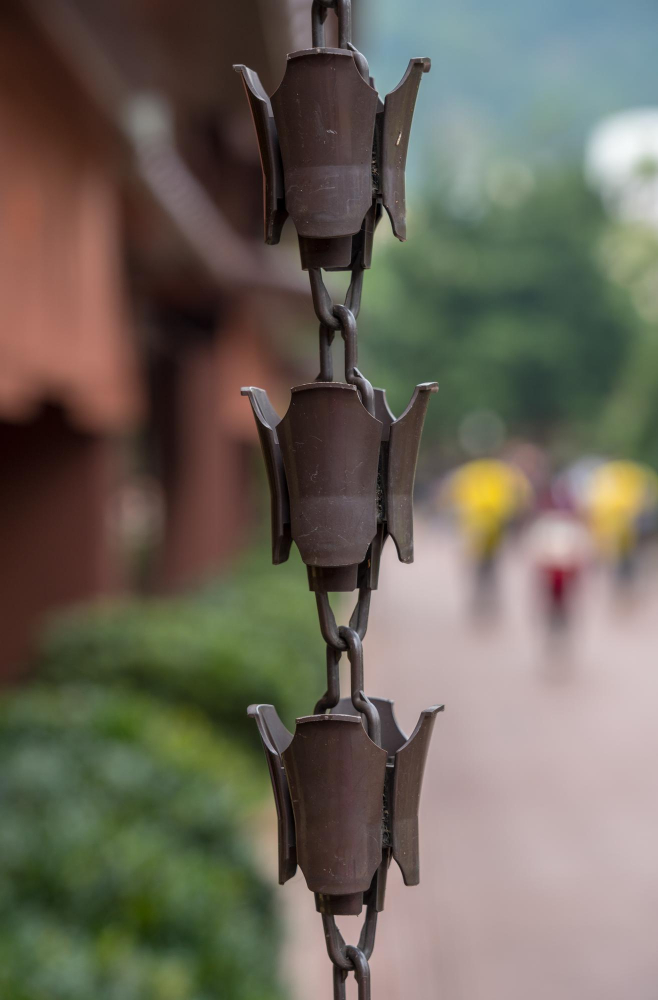
These systems work by breaking up the flow of water as it falls from the roof, preventing large amounts of water from accumulating in one area and causing damage. Rain dispersal systems can be installed on metal roofs using various materials such as mesh screens or perforated panels that allow for proper drainage while also adding an interesting design element to your home’s exterior.
One popular type of rain dispersal system is called a “rain chain.” A rain chain consists of a series of decorative cups or links that hang vertically from the edge of your roofline. As rainfall hits each cup, it flows down into the next cup below until reaching ground level where it can be collected in a barrel or dispersed away from your home’s foundation.
Downspout Alternatives

Fortunately, there are several downspout alternatives that can effectively manage rainwater without detracting from your home’s exterior design. One option is to install a rain chain system, which replaces the downspout with a decorative chain that guides water into an underground drainage system or collection basin.
Another alternative is to use drip edges along the roofline instead of traditional gutters and downspouts. Drip edges direct water away from your home’s foundation while also adding visual interest to your metal roof’s edge.
Another popular choice for managing rainwater on metal roofs is French drains or ground gutters. These systems involve digging trenches around the perimeter of your home and filling them with gravel or other porous materials that allow water to seep through and drain away from your foundation.
When considering downspout alternatives for metal roofs, it’s important to keep in mind factors such as climate conditions in order choose an effective solution based on local weather patterns and rainfall intensity levels.
Drip Edges
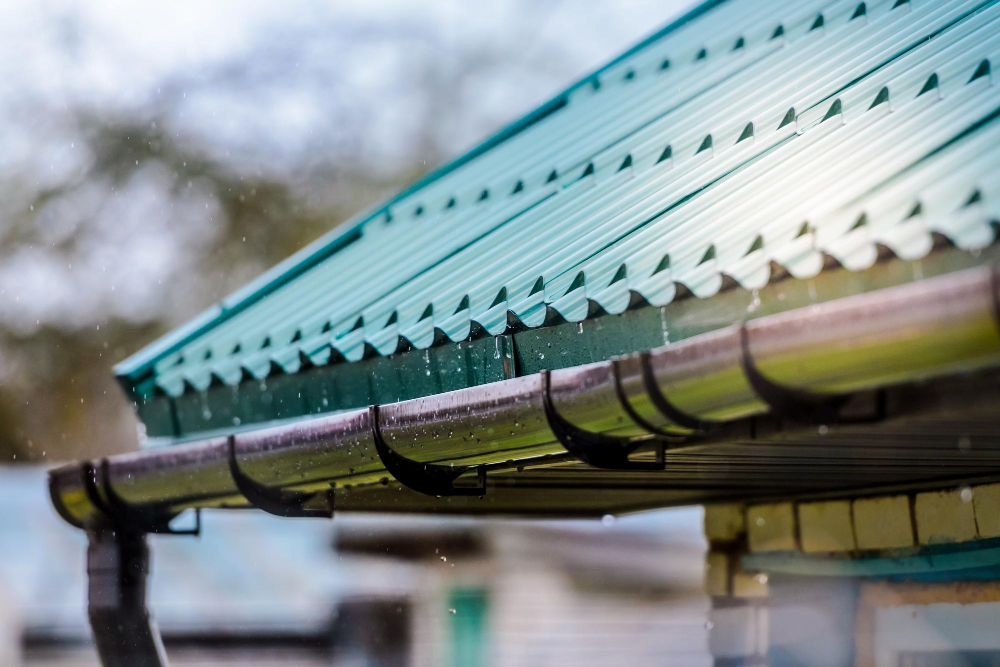
This can lead to damage to your home’s foundation, landscaping, and even the roof itself. Drip edges are a simple solution that can help prevent this problem.
A drip edge is a small piece of metal that is installed along the edge of your roofline. It helps direct rainwater away from your home by creating a barrier between the roofing material and fascia board or gutter system.
Drip edges come in various materials such as aluminum, copper or galvanized steel and colors so you can choose one that matches your existing roofing material seamlessly.
Installing drip edges during new construction or when replacing an old roof will ensure proper water management without having to install additional gutters which saves money while still providing protection against water damage.
French Drain / Ground Gutters
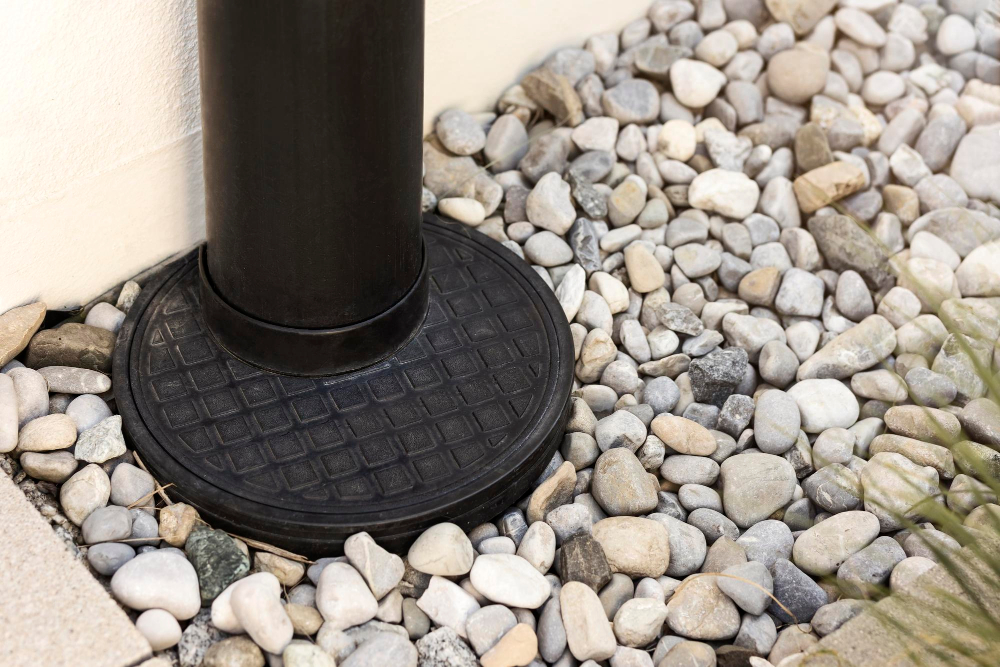
These systems involve digging a trench around the perimeter of your home and filling it with gravel or perforated pipe that directs water away from your foundation. This method is particularly useful if you have sloping terrain around your home that causes water to pool near the foundation.
Ground gutters are similar in concept but involve installing shallow trenches filled with gravel or decorative stones along walkways, driveways, and other areas where runoff can cause damage. Both French drains and ground gutters require professional installation but can provide long-lasting protection against moisture damage.
While these options may not be as visually appealing as some of the other gutter alternatives we’ve discussed, they offer an unobtrusive way to manage rainwater without detracting from your home’s curb appeal. Plus, they’re often more affordable than traditional gutter systems while still providing excellent functionality.
When it comes to managing rainwater on metal roofs, there are plenty of alternative solutions available beyond traditional gutter systems. From seamless gutters to built-in options like integrated gutter systems or custom fabricated designs – each option has its own unique benefits depending on what works best for your specific needs.
Gutter Guards and Screens
These devices work by covering the top of the gutter with a mesh or screen that allows water to flow through while blocking leaves, twigs, and other debris from entering.
While gutter guards and screens can be effective in reducing clogs, they do require regular maintenance. Over time, small particles like pollen or dirt can accumulate on the surface of these devices which may reduce their effectiveness.
Some types of gutter guards may not be compatible with certain roofing materials such as metal roofs.
When considering whether to install gutter guards or screens on your metal roof gutters it’s important to weigh up both pros and cons carefully before making any decisions. While they can save you time in cleaning your gutters regularly; there is an initial cost involved in purchasing them along with ongoing maintenance costs over time.
Gutter Color and Material Options
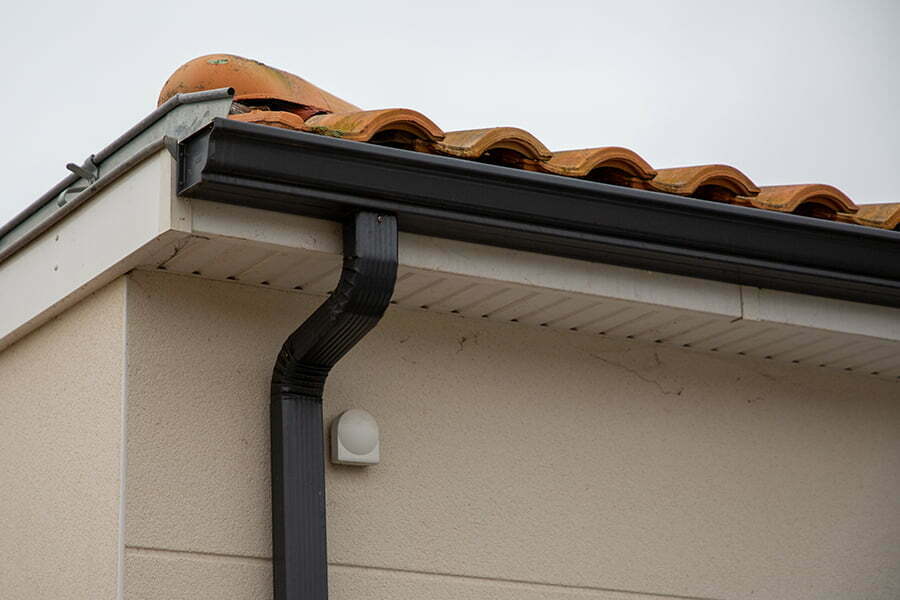
While traditional gutters are typically made from aluminum or vinyl, these materials may not be the best fit for metal roofing due to their potential for corrosion. Instead, consider opting for stainless steel or copper gutters that will complement the look of your metal roof while also providing long-lasting durability.
In addition to choosing the right material, selecting a gutter color that complements your home’s exterior is equally important. Many manufacturers offer custom colors so you can match your gutters with your roof or trim seamlessly.
Installing Gutters On Metal Roofs
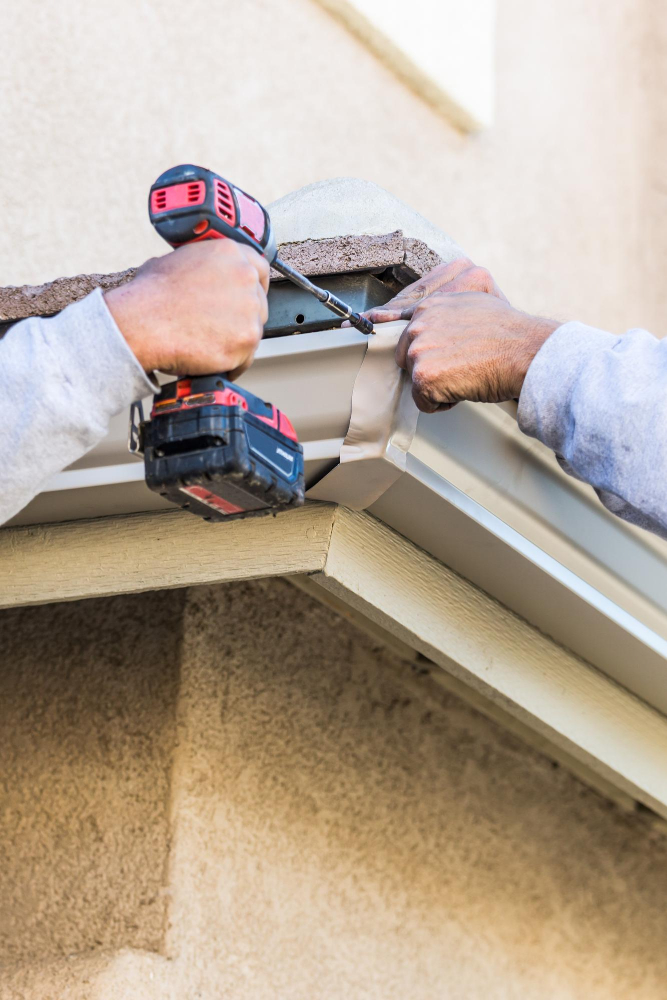
With the right tools and techniques, it is still possible to achieve a secure and effective installation. One important consideration when installing gutters on metal roofs is the type of fasteners used.
It’s essential to use screws or bolts that are specifically designed for metal roofing as they will provide better stability and prevent leaks.
Another crucial factor in gutter installation is ensuring proper slope for water drainage towards downspouts. The recommended slope for gutter systems installed on metal roofs should be at least 1/4 inch per foot towards the downspout location.
It’s also important to properly seal all joints between sections of guttering using silicone caulk or specialized seam sealing products made specifically for this purpose.
If you’re not confident in your ability to install gutters yourself, it may be best to hire a professional contractor who has experience working with both metal roofing and gutter systems. They can ensure that your new gutters are securely attached without damaging your roof while providing optimal water management functionality.
Gutter Maintenance Tips
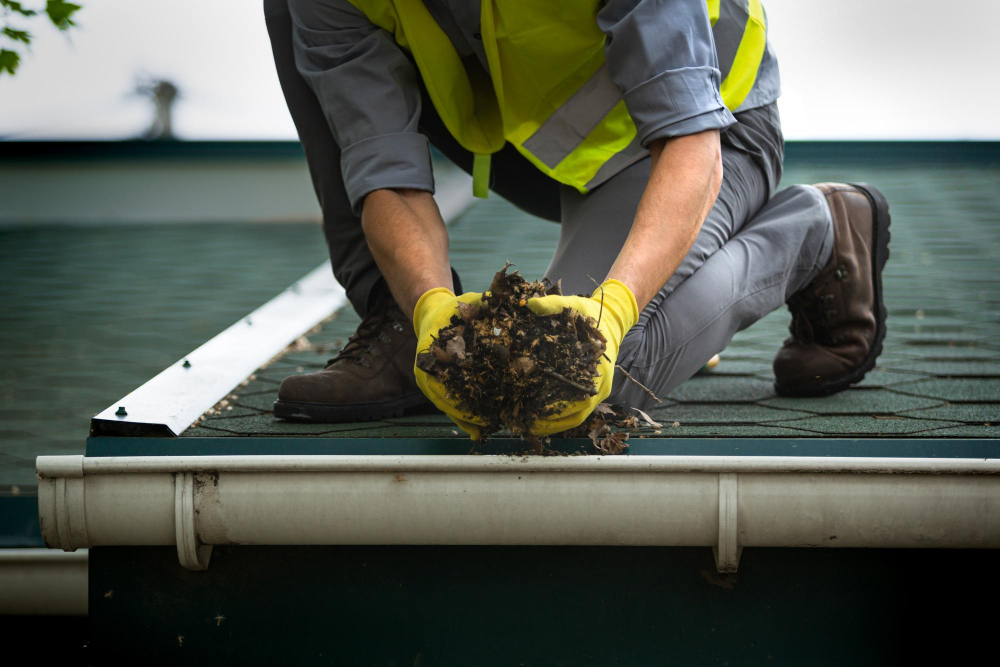
Neglecting to clean and maintain gutters can lead to clogs, leaks, and even damage to your roof or foundation. When it comes to metal roofs, proper gutter maintenance is especially important as the wrong type of cleaning or repair can cause damage.
To keep your gutters functioning properly on a metal roof, here are some tips:
1. Clean them regularly: Metal roofs shed debris more easily than other roofing materials but that doesn’t mean you should neglect regular cleaning.
Debris such as leaves and twigs can still accumulate in the gutters over time.
2. Use caution when cleaning: Avoid using sharp tools or abrasive cleaners that could scratch the surface of your metal roof while you’re up there clearing out debris from the gutter system.
3. Check for rust: Metal roofs are susceptible to rust if they’re not properly maintained so be sure to check for any signs of corrosion on both the roofing material itself and its associated components like screws or brackets.
4. Repair leaks promptly: If you notice any water leaking from seams between sections of guttering then it’s important not only fix this issue quickly but also investigate why it happened in order prevent future problems down-the-line.
Cost Comparison of Gutter Alternatives
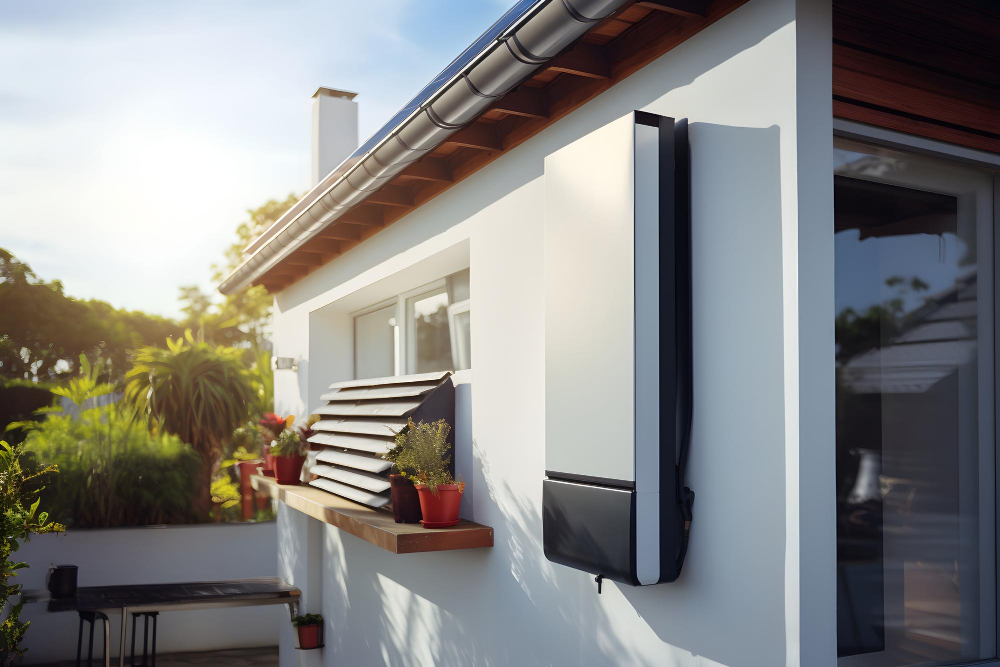
While traditional gutters can be expensive and require frequent maintenance, there are many affordable options that offer long-term benefits. Seamless gutters are a popular choice as they eliminate the need for joints and reduce the risk of leaks.
Integrated gutter systems also provide an attractive solution by blending seamlessly with your roofline while effectively managing rainwater.
Custom fabricated gutters may come at a higher price point but offer unique design possibilities that can enhance your home’s curb appeal. Rain chains and rain dispersal systems provide an eco-friendly option that adds visual interest to your exterior while directing water away from your foundation.
It’s important to note that installation costs will vary depending on factors such as roof pitch, accessibility, and material selection. However, investing in quality gutter alternatives now can save you money in the long run by reducing repair costs associated with water damage or clogged gutters.
Eco-Friendly Gutter Solutions
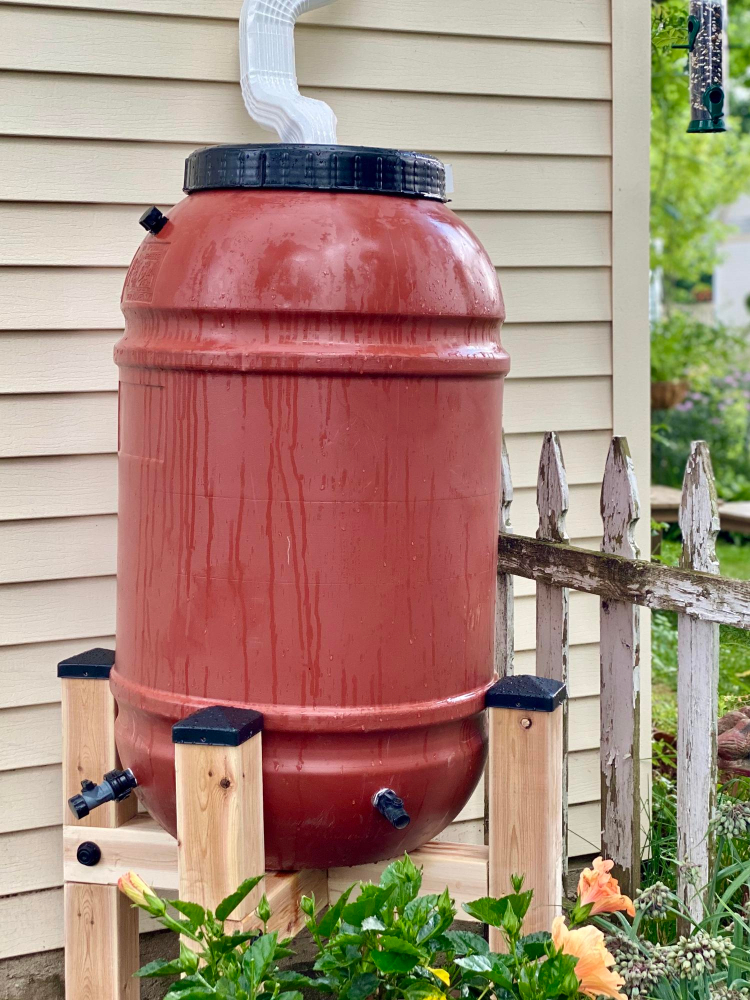
One popular choice is rain barrels, which collect and store rainwater that can be used for watering plants or washing cars. Another option is to install a green roof system with vegetation that absorbs and filters rainwater before it enters the gutters.
Some companies offer recycled aluminum gutters made from post-consumer materials. These gutters not only reduce waste but also require less energy to produce than traditional metal options.
When choosing an eco-friendly gutter solution, consider factors such as durability and maintenance requirements in addition to sustainability features.
Pros and Cons of Gutter Alternatives
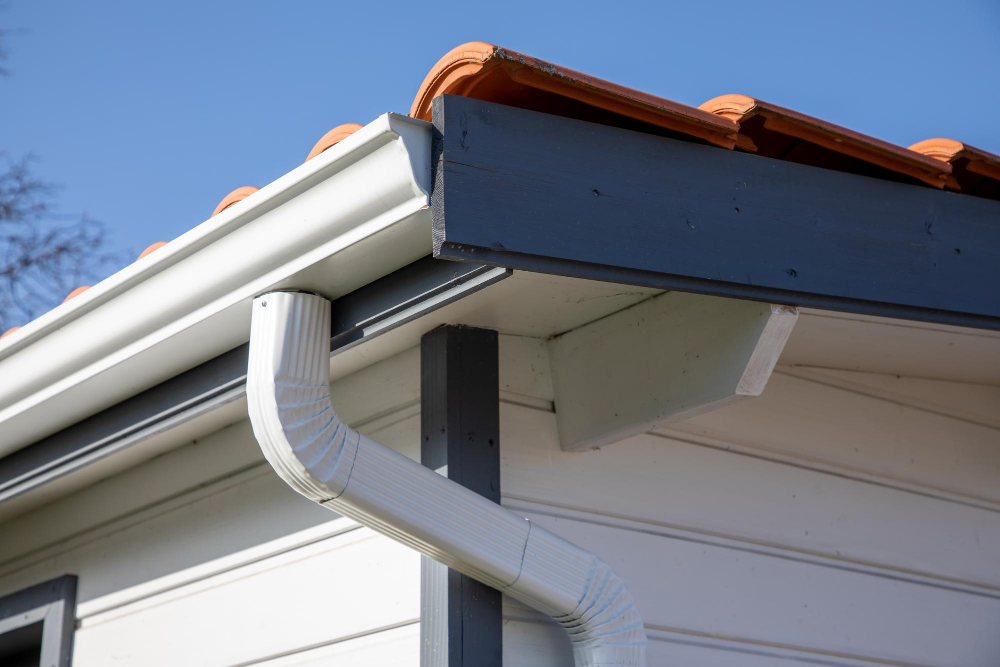
Each alternative has its own set of pros and cons that homeowners should consider before making a decision.
One of the biggest advantages of using gutter alternatives is their ability to enhance the overall look and feel of your home’s exterior. Traditional gutters can be bulky and unsightly, while many alternative options offer sleeker designs that blend in seamlessly with your roofline.
Another benefit is improved water management. Some gutter alternatives are designed to handle heavy rainfall more effectively than traditional gutters, reducing the risk of water damage or flooding around your home’s foundation.
However, there are also some potential drawbacks to consider when exploring these options. For example, some types may require professional installation or custom fabrication which can add extra costs compared to standard gutters.
Not all gutter alternatives may be suitable for every type of metal roofing material or design style – so it’s important to do thorough research before making a final decision on which option will work best for you.
Are Gutter Alternatives Effective?
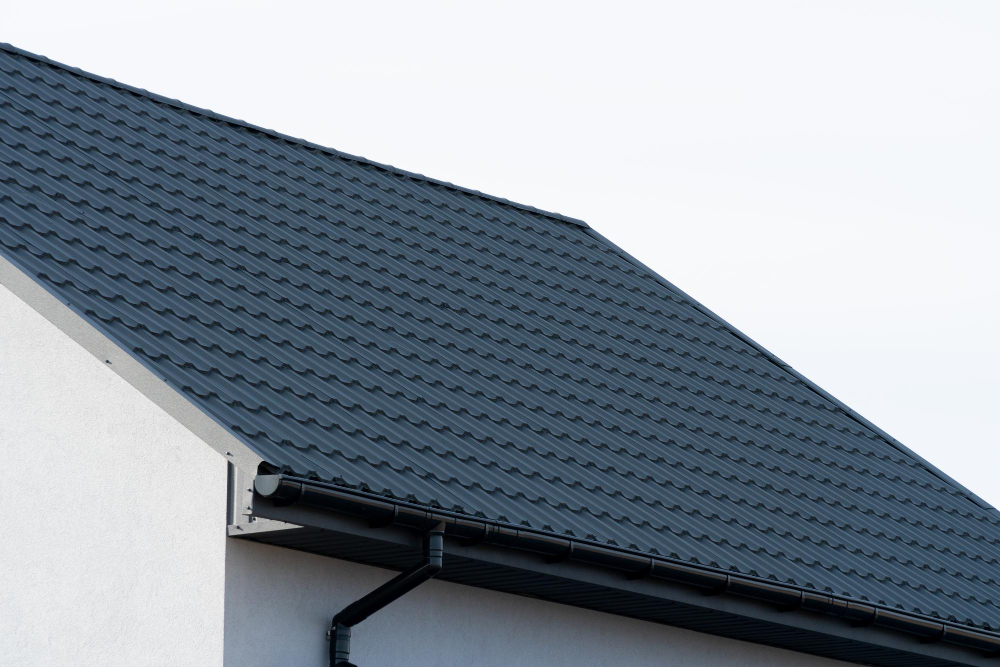
The answer is yes! While some alternative options may require a bit more maintenance or installation expertise, they can be just as efficient at managing rainwater and protecting your home’s foundation from water damage.
For example, seamless gutters are a popular choice for metal roofs because they eliminate the need for joints that can become clogged with debris over time. Integrated gutter systems and built-in gutters also provide excellent protection against water intrusion while maintaining a sleek appearance that complements the roof’s design.
Rain chains and rain dispersal systems offer an aesthetically pleasing way to manage runoff by directing it into decorative channels or basins rather than traditional downspouts. And French drains or ground gutters can effectively divert water away from your home’s foundation without detracting from its curb appeal.
Ultimately, the effectiveness of any gutter alternative will depend on factors such as climate conditions, roof pitch, and local building codes.
FAQ
How do I divert water from my roof without gutters?
To divert water from your roof without gutters, install drip edges at the edge of the roof which will move water away from the fascia and prevent it from running down the side of the house.
Do you need different gutters with a metal roof?
Although metal roofs are resistant to damage, using gutters with them can still enhance water drainage and protection.
What is the cheapest gutter option?
The cheapest gutter option is vinyl gutters made from PVC plastic, which are budget-friendly but not recommended for extreme climates or heavy precipitation.
Are there specific gutter materials that work best with metal roofs?
The specific gutter materials that work best with metal roofs are aluminum, steel, and copper.
How can drip edges contribute to water diversion in the absence of gutters?
Drip edges contribute to water diversion in the absence of gutters by directing water away from the building’s foundation, thus preventing structural damage.
Can rain chains serve as an efficient alternative for gutters on metal roofs?
Rain chains can serve as an efficient alternative for gutters on metal roofs due to their aesthetic appeal and functionality in directing water flow.
Recap
Liked this article? Here's what you can read next:
